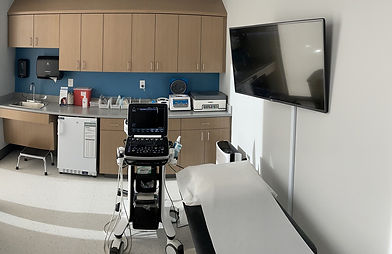OSGOOD-SCHLATTER DISEASE
Osgood-Schlatter disease (OSD) is a common cause of knee pain in growing adolescents, particularly those who are active in sports. It is an overuse injury that affects the growth plate at the tibial tuberosity, which is located just below the knee. The condition is named after the two physicians, Robert Osgood and Carl Schlatter, who independently described it in the early 20th century.
SYMPTOMS
The most prominent symptom of Osgood-Schlatter disease is knee pain, usually felt just below the kneecap and on the tibial tuberosity. The pain tends to worsen with activities that involve jumping, running, or squatting, such as sports like soccer, basketball, or volleyball.


TREATMENT OPTIONS FOR OSGOOD-SCHLATTER PAIN
As with most orthopedic conditions, patients will often begin with a combination of physical therapy, anti-inflammatories, ice and rest (and in some cases, steroid injections). When these methods are no longer effective, Carolina Nonsurgical Orthopedics offers the latest in cutting-edge treatments to reduce pain and get you back to the activities you enjoy. Some of these innovative alternatives to surgery include Orthobiologics and Regenerative Medicine treatments, such as:
-
Platelet-Rich Plasma (PRP) Injections: Use your own platelets to reduce inflammation and accelerate healing.
-
Prolotherapy: Uses dextrose (sugar water) in place of steroid to reduce pain and promote healing.
-
Shockwave: A non-invasive therapy that uses impulses to treat chronic pain and repair tissue.
See the full list of conditions and treatments offered at Carolina Nonsurgical Orthopedics.
READ MORE ABOUT OSGOOD-SCHLATTER
Osgood-Schlatter disease is essentially an inflammation of the patellar tendon at its insertion point on the tibial tuberosity. The patellar tendon connects the kneecap (patella) to the shinbone (tibia), and repetitive stress or overuse from activities like running, jumping, or squatting can lead to microtrauma at the tibial tuberosity. During periods of rapid growth, the bones lengthen faster than the muscles and tendons can stretch, which places additional strain on the patellar tendon. The growth plate in this region, which is a softer, developing tissue, can become irritated, leading to inflammation and swelling. In some cases, repeated stress and inflammation may cause a small piece of the tibial tuberosity to pull away, leading to a bony prominence. This process can cause the knee to feel tender, swollen, and painful. While OSD is self-limiting and typically resolves after the growth plates close, it can be quite uncomfortable for those experiencing the condition. Symptoms The most prominent symptom of Osgood-Schlatter disease is knee pain, usually felt just below the kneecap and on the tibial tuberosity. The pain tends to worsen with activities that involve jumping, running, or squatting, such as sports like soccer, basketball, or volleyball. Swelling and tenderness are often present around the tibial tuberosity, and the affected knee may appear swollen or feel warm to the touch. Pain may also be aggravated by direct pressure on the area, such as when kneeling. In some cases, a noticeable bump can form on the tibial tuberosity as a result of the inflammation. Diagnosis Osgood-Schlatter disease is generally diagnosed based on clinical history and physical examination. A healthcare provider will look for a combination of symptoms, including pain at the tibial tuberosity, swelling, and activity-related discomfort. Imaging tests, such as X-rays, may be used to rule out other potential causes of knee pain, such as fractures or infections. X-rays can also reveal changes to the bone structure, including the characteristic bony prominence at the tibial tuberosity, which is a hallmark of OSD. Treatment Treatment for Osgood-Schlatter disease is typically conservative, as the condition often resolves on its own once the growth spurt slows and the growth plates close. The goal of treatment is to manage pain, reduce inflammation, and allow for the child to continue participating in activities with modifications. Rest is one of the key components of treatment, and a reduction in high-impact activities, such as running and jumping, can help alleviate the strain on the knee. Other treatments include ice application to reduce swelling, anti-inflammatory medications (like ibuprofen) for pain relief, and physical therapy to strengthen the quadriceps and hamstring muscles. In some cases, a knee brace or patellar tendon strap may be used to reduce pressure on the tibial tuberosity during activities. If the pain is severe or persistent, or if there is concern about a bony fragment, surgery may be considered, but this is rare.


WHY CAROLINA
NONSURGICAL ORTHOPEDICS
-
All Providers are BOARD CERTIFIED and Specially Trained in Nonsurgical Orthopedics
-
Over 50,000+ and Counting Procedures Performed
-
Procedures Performed with Ultrasound Guidance for Accuracy and Safety
-
Local and Independent Practice That is NOT a Franchise
-
Discounts for Service Members, Teachers, and Public Servants
-
Serving Raleigh Since 2013
.png)
